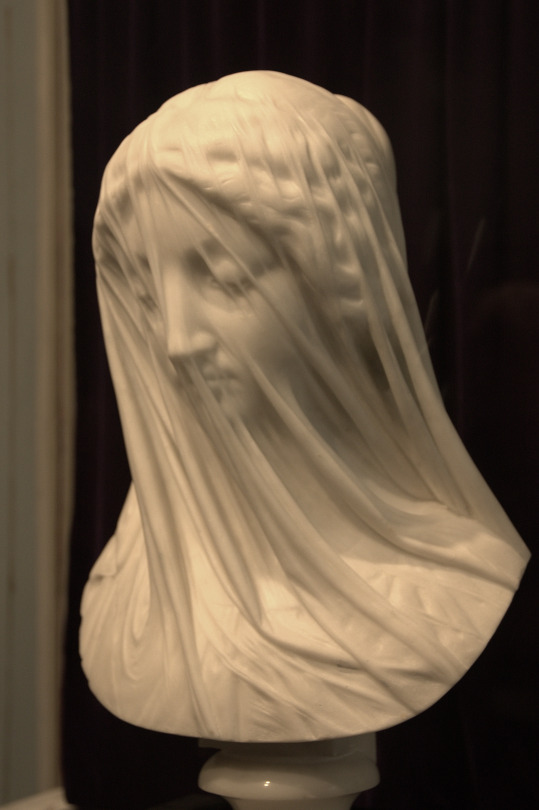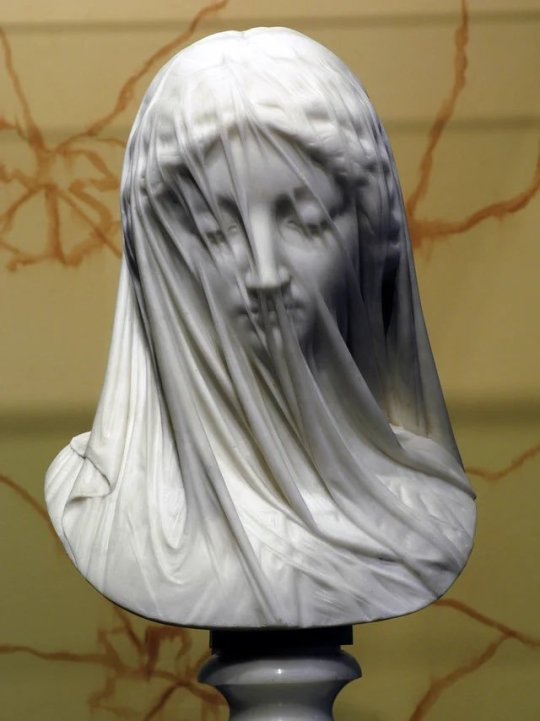#Giovanni Strazza
Text
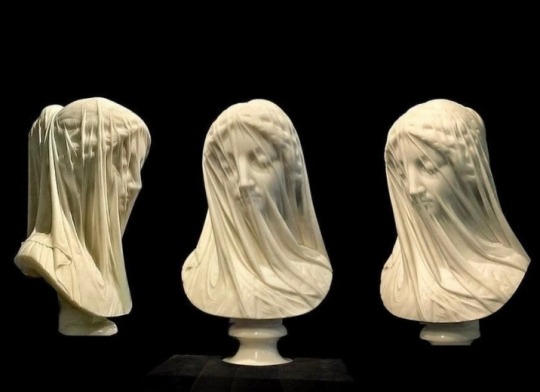
The Veiled Virgin was created by Italian sculptor, Giovanni Strazza (1818–1875), in Rome during the 1850s.
The statue appears translucent but is made completely out of Carrara marble, a material derived from Tuscany and used frequently by Italian Renaissance artists and ancient Roman builders.
In 1856, the statue was transported to Newfoundland where it was received by Bishop John Thomas Mullock (27 September 1807 – 26 March 1869).
In his diary, he wrote:
"Received safely from Rome, a beautiful statue of the Blessed Virgin Mary in marble, by Strazza. The face is veiled, and the figure and features are all seen. It is a perfect gem of art."
#Veiled Virgin#Giovanni Strazza#Carrara marble#Newfoundland#Bishop John Thomas Mullock#Blessed Virgin Mary#statue#Rome#marble#Renaissance#marble busts
61 notes
·
View notes
Text


"La Pudicizia" art study.
Commissions open!.
59 notes
·
View notes
Text
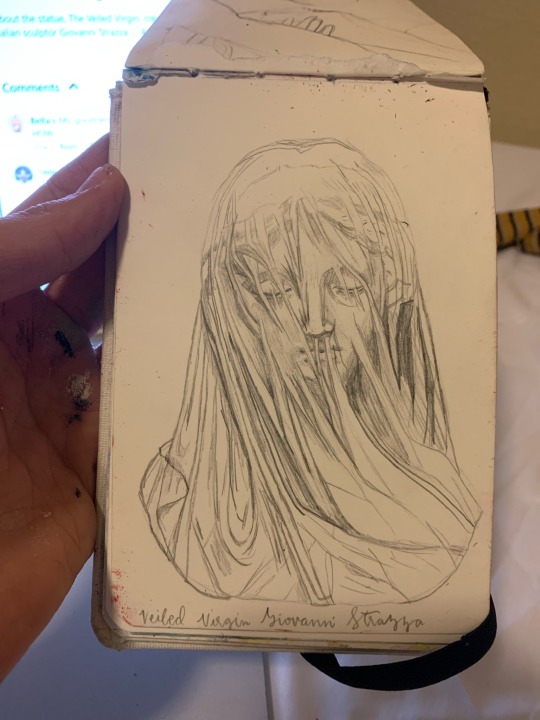

The veiled virgin by Giovanni strazza!
#dasha.draws#watercolor#watercolors#watercolor painting#will i ever finish this piece? who knows!!! I don’t know :D#Catholic art#Catholic#Mary#virgin Mary#art#painting#veiled virgin#Giovanni strazza
14 notes
·
View notes
Text
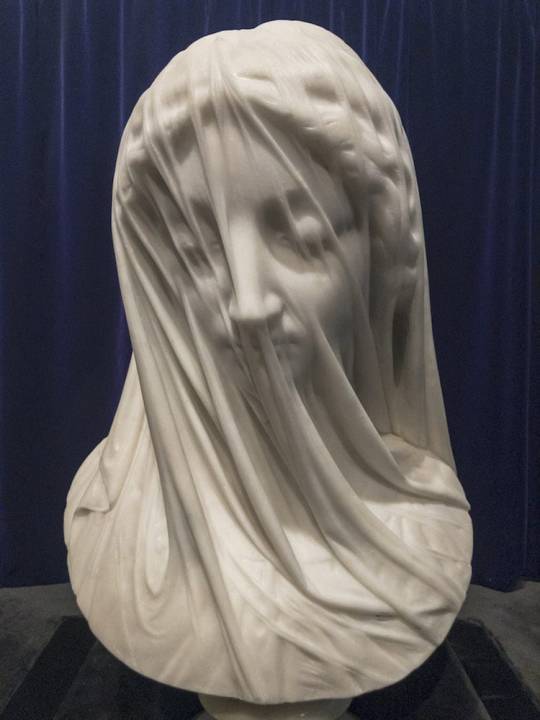
«Y esto nos lleva de nuevo a la función del velo en el Islam: ¿qué pasa si el verdadero escándalo que este velo se empeña en ofuscar no es el cuerpo femenino oculto por él, sino la inexistencia de lo femenino? ¿Qué pasa si, por consiguiente, la función última del velo es precisamente sostener la ilusión de que hay algo, lo sustancial, detrás del velo? Si, siguiendo la ecuación de Nietzsche de verdad y mujer, trasponemos el velo femenino al velo que oculta la verdad última, lo que verdaderamente está en juego en el velo musulmán se hace aún más claro. La mujer es una invitación porque representa la “indecibilidad” de la verdad, por una sucesión de velos debajo de los cuales no hay ningún núcleo último; al velarla, creamos la ilusión de que hay, por debajo del velo, la verdad femenina, la verdad horrible de la mentira y el engaño, por supuesto».
Slavoj Žižek: Islam y modernidad. Herder, págs. 80-81. Barcelona, 2015.
TGO
@bocadosdefilosofia
@dies-irae-1
#slavoj žižek#slavoj žižek#islam y modernidad#islam#modernidad#velo#mujer#femenino#verdad#verdad última#ilusión#cuerpo#cuerpo femenino#escándalo#Nietzsche#Indecibilidad#teo gómez otero#strazza#giovanni strazza#la virgen velada#velo musulmán
3 notes
·
View notes
Text

Bust of The Veiled Virgin by Giovanni Strazza. The real bust was made c.1850s and resides at Presentation Convent, St. John's, Newfoundland, Canada.
1 note
·
View note
Text
The Veiled Virgin by Giovanni Strazza, 1850s
THIS MAN by J x W (Seventeen) promotional posters, 2024



21 notes
·
View notes
Text

The Veiled Virgin, by Giovanni Strazza, 1856
20 notes
·
View notes
Text

Just imagine the ability to render solid stone transparent. Giovanni Strazza possessed this incredibly rare artistic talent. His masterpiece, "The Veiled Virgin," carved from flawless Carrara marble, stands as one of the most astounding achievements in the history of sculpture.
Strazza's mastery of the "wet drapery" technique carried on the tradition of other Italian sculptors like Giuseppe Sanmartino, who, a century earlier, had crafted mesmerizing marble veils, exemplified by the renowned "Veiled Christ."
This artistic tradition can be traced back to earlier sculptors, including renowned Renaissance artists such as Michelangelo, as well as the ancient masters from Greece's Hellenistic era, who were celebrated for their intricate depictions of fabric folds.
However, in the mid-19th century, Strazza pushed this technique to its limits. The delicate, layered effect he achieved allows the observer to distinctly perceive Mary's facial features through the translucent veil while simultaneously creating the illusion of weightlessness.
The process of how he transformed solid stone into something so soft and fluid, using only basic hand tools, remains a profound mystery.
Credit : owner
20 notes
·
View notes
Text
İŞTE SANATTA NIRVANA!!!
İtalyan Heykeltraş Giovanni Strazza 1818-1875



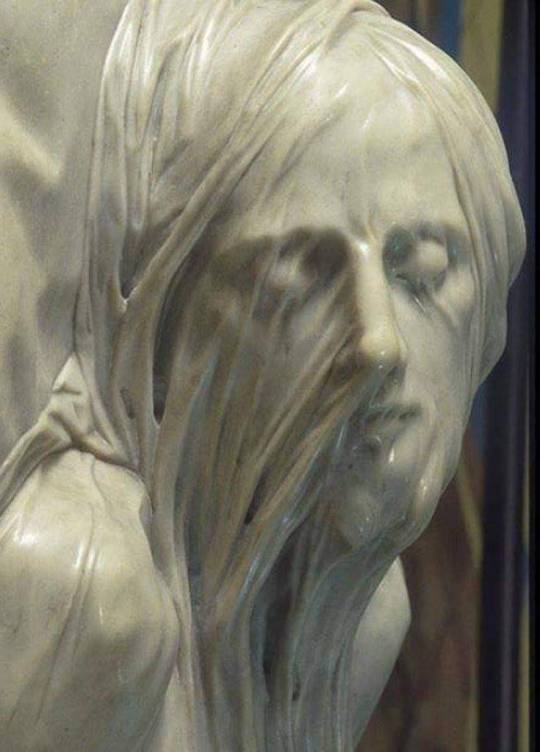
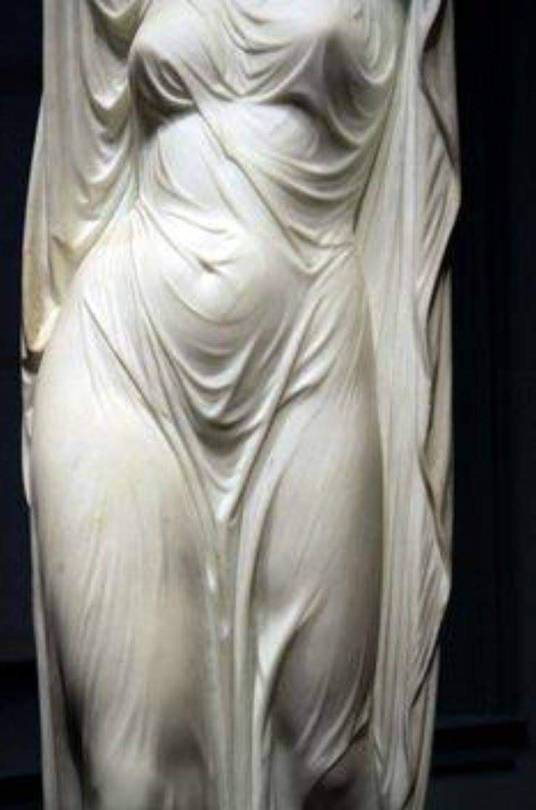
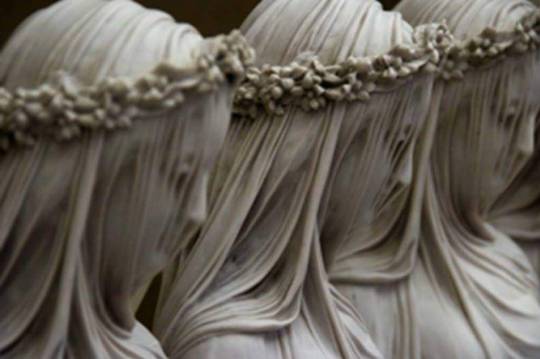


12 notes
·
View notes
Text
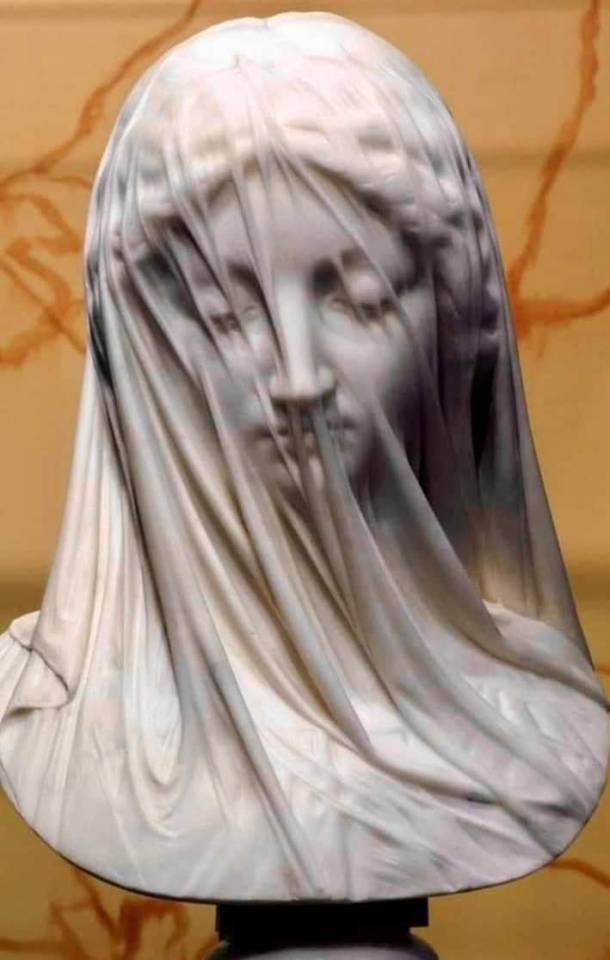
"Come può un uomo con uno scalpello, trasformare in un velo un materiale duro come il marmo… esso diventa trasparenza. È incredibile la potenza del talento!"
~Alberto Angela ~
La “Vergine velata” è un busto in marmo di Carrara, realizzato a Roma dallo scultore Giovanni Strazza (1818-1875).
18 notes
·
View notes
Text
Il Velo

Vergine velata, 1850 (Presentation Convent, St. John’s, Canada) | Giovanni Strazza (1818-1875, Italia)

Sally Fairchild with blue veil, 1890 | John Singer Sargent (1865-1925, USA)

The blue veil, 1898 | Edmund Tarbell (1862-1938, USA)
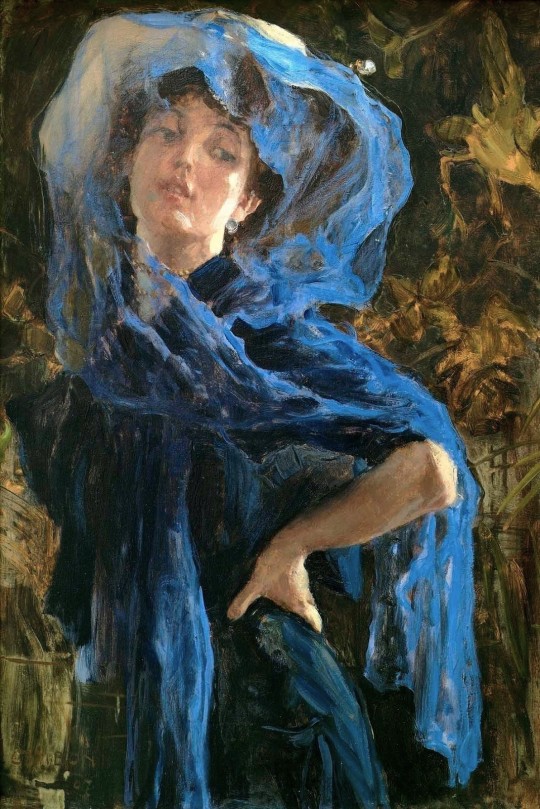
Il velo azzurro (the blue veil), 1907 | Glauco Cambon (1875-1930, Italia)

Fashionable lady with feathered hat, early 20th-century | Axel Wallert (1890-1962, Sweden)

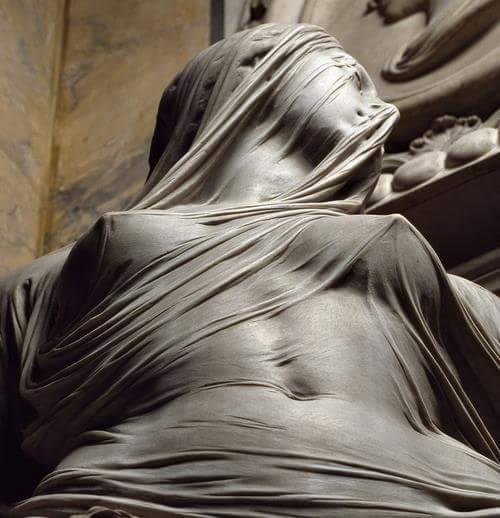
La Modestia, 1751 (Cappella Sansevero, Napoli) | Antonio Corradini (1688-1752, Italia)
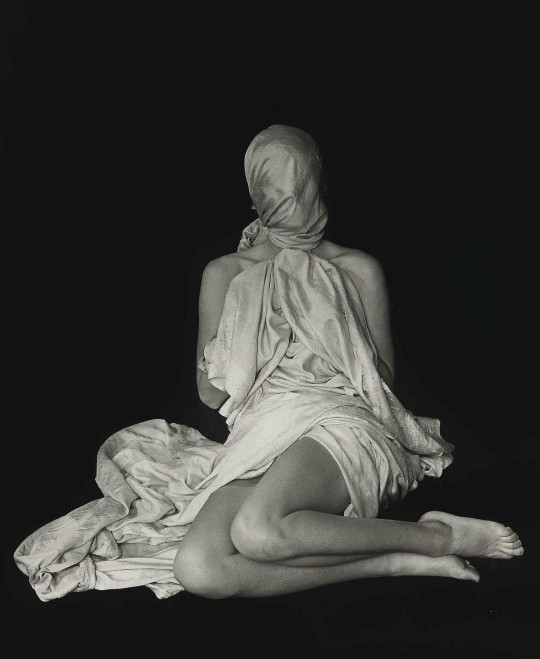
La pudeur (modesty), 1937 ca. | ph., Erwin Blumenfeld (1897-1969, Germany-USA)

Boreas, 1902-03 | John William Waterhouse (1849-1917, England)
2 notes
·
View notes
Text
• 1411: San Giovanni Evangelista - Donatello
• 1499: Pietà - Michelangelo
• 1515: Mosè - Michelangelo
• 1599: Ercole e il centauro Nesso - Giambologna
• 1624: David - Gian Lorenzo Bernini
• 1752: Modestia - Antonio Corradini
• 1801: Perseo con la testa di Medusa - Antonio Canova
• 1850: La Vergine Velata - Giovanni Strazza
• 1880: Ondina che emerge dalle acque - Chauncey Ives

5 notes
·
View notes
Photo

“Our success in the Christian life depends entirely on how well we submit our will to the will of God. The more complete the submission to the divine will, the more fruitful and successful our spiritual life will be.
In a word, the fulfillment of God’s law depends entirely on our love for God and for every human being. Love must be the foundation of all our actions. This is the fashioning of the will of man to the will of God. Whatever God wants, I want as well. Whatever God does not want, I do not want either. There is nothing more powerful than such love!”
~St. John Maximovitch
(Art: The Veiled Virgin; Carrara marble statue by Italian sculptor Giovanni Strazza (1818–1875).
#Virgin Mary#Theotokos#submit our will to the will of God#saints#Orthodox Christian#St. John Maximovitch#Christian art#sculpture#The Veiled Virgin#agape#love for God and every human being#fulfill God's law
25 notes
·
View notes

